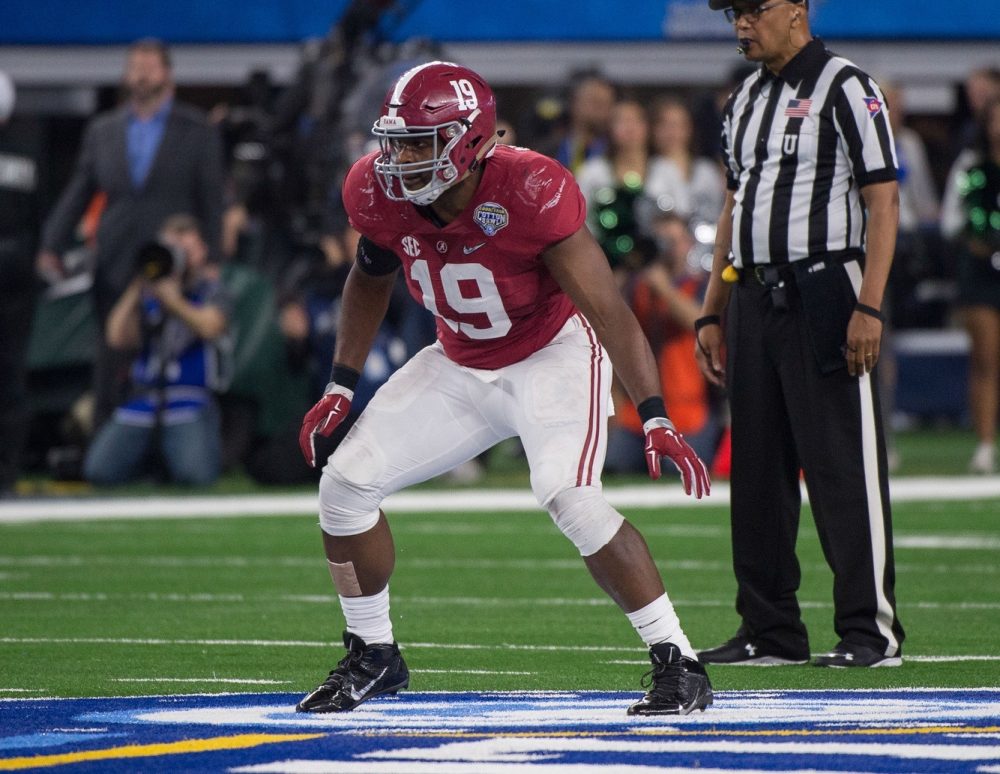
When former Carolina Panthers defensive coordinator Sean McDermott was named the new head coach of the Buffalo Bills back in January, there were concerns about how Reggie Ragland would fit in McDermott’s 4-3 system.
Ragland, a standout linebacker for Alabama from 2012 to 2015, was already coming off a torn ACL that had ended his rookie season prematurely. On top of that, the 4-3 defense was never considered the ideal scheme for his skill set. Now that we know that the former 2016 second-round pick has been traded to the Kansas City Chiefs, those concerns about Ragland’s fit were clearly warranted.
The Chiefs gave up a 2018 fourth-round draft pick for Ragland, and that could end up being a steal if Ragland can return to pre-injury form. Back at the 2016 NFL Combine, Ragland checked in at 6-1, 247 pounds. His 4.72 40-yard dash wasn’t spectacular, but true sideline-to-sideline speed was never Ragland’s game anyways. He’s a thumper inside, and his size, instincts and aggressive nature make him an ideal fit for a 3-4 defense.
When the Bills selected him with the No. 41 pick in the 2016 NFL Draft, that’s the exact scheme that then head coach Rex Ryan deployed. The similarities between Ragland and former Jets linebacker David Harris, who had manned Ryan’s defense in New York from 2009 to 2014, made him a perfect fit for what Ryan was looking for. That was until Ryan was fired following a 7-9 record in 2016.
McDermott was ultimately brought in as Ryan’s replacement, and the rest is history.
While the ACL injury most certainly contributed to Ragland’s demise in Buffalo, his limited athleticism pre-injury also contributed. McDermott’s middle linebacker in Carolina was Luke Kuechly, a 6-3, 235-pound Mike linebacker with 4.59 speed. That’s just not the type of player the Bills were going to get in Ragland, and that’s why shipping him off to Kansas City made so much sense.
Derrick Johnson, a 12-year veteran for the Chiefs, isn’t expected to be able to lead the defense much longer, so finding a successor is a top priority for Kansas City. Ragland has shown the ability to be that guy when fully healthy.
Ragland will now get the chance to stack-and-shed offensive linemen again in a defense that is similar to the one he played in at Alabama. Additionally, a 3-4 inside linebacker isn’t required to roam from sideline-to-sideline as much as a 4-3 middle linebacker, so that should also help mask Ragland’s limited athleticism.
The hope is for the Madison, Ala., product to turn things around with the Chiefs and emerge as a field general for the next decade. Kansas City’s defensive scheme gives Ragland a much better chance to do that.
Clint Lamb is an associate editor for Touchdown Alabama Magazine. You can “follow” him on Twitter @ClintRLamb.













